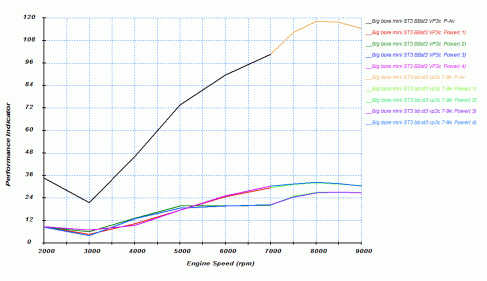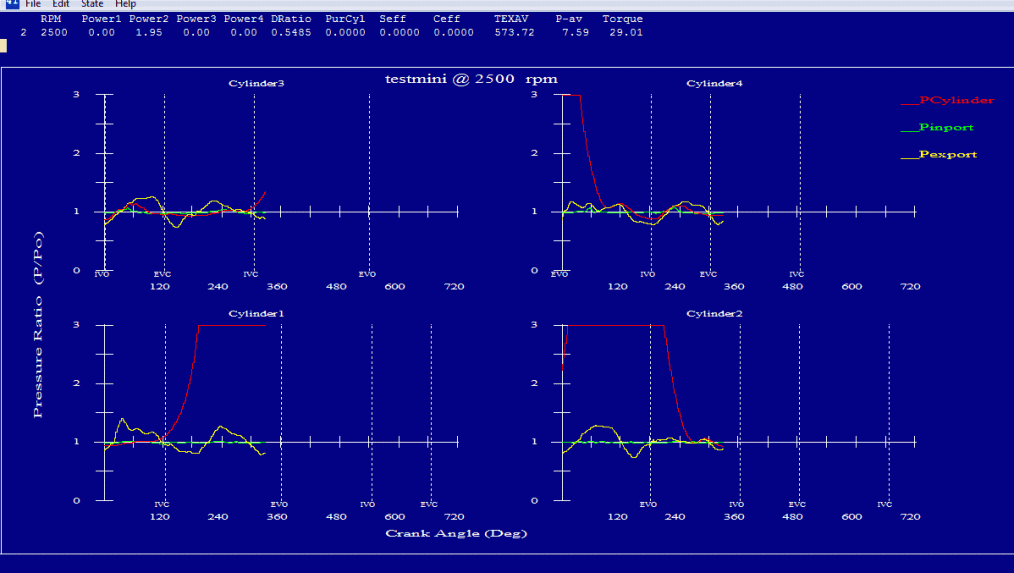
The odd thing is that the Siamese port head is in dire need of some investigations on a somewhat more fundamental level than they thought possible when they designed it many many moons ago. Ideally you would have a dyno mule rigged with a full set of ultra fast in-cylinder and in manifold and above valve pressure transducers, multiple lambda sensors , air mass sensors and EGT’s. If I win the lottery it would think about it, but as I don’t play things look a tad bleak on that front.
Not long ago something like 1D simulations would have been the sole domain of OEM’s with very deep pockets and CFD was just used on fighter jets design and by NASA. Things have changed quite a bit in the last few years. Eng Mod 4T costs about 400$ (and that would not even cover the cost of one week of licensing of the big boys) and CFD packages can be had for ..freee.
Trouble with free is that it was usually experimental code that involves a unix/linux prompt, a degree of two in advanced mathematics and a lot patience to get the thing running for your hardware. Older laptops do quite well in the getting it running on Linux department as they present a fairly constant configuration and as they are old, drivers and such actually exist. But old means slow and CFD needs fast. On the other hand your laptop probably has a lot more computational horses under the hood than they had when they designed the space shuttle so you really can’t complain . Just for your inner nerd : The Cray X-MP/22 that they used in 1986 for weather forecasts could manage 800 Mflops.. my vintage laptop manages 1.2 Gflops to about 3.5 Gflops . Having said that you will still want all the HP you can, if you want you compute larger simulations and not wait a week or so.But as it is 2014 you have working cloud computing , granting access to resources that would be unheard off 5 year ago for not all that much money. Using EC2 ( amazon elastic cloud) you can have a reaaaly big computer as pay as you use it. It makes all kinds of sense. For 1000$ you can either buy a computer that will be outdated next week or have several thousand hours of computing time that you can initiate off your older laptop or desktop .
Something like CAE linux will provide you with a linux (Ubuntu) distribution ready installed with all the stuff you could want . I have negligible Linux experience (late nineties Power PC linux.. it was just too hard to make it do anything useful) but I managed to make it boot from a USB stick and install in on an old 80 GB external USB HD in about 30 minutes, and whats more, everything seems to work including WIFI and trackpads. I will still have to do a LOT of reading to make it do stuff and make sense as the packages include several very powerful (and thus complicated) CFD solvers , CAD , FEM etc etc. Those are not programmed by hobbyists but often products of government funded, university and research programs like that of the EDF (French national electricity grid) involving very smart people writing millions of lines of code.
My nerd quotient has tripled as well, but now come the hard part.. making it do stuff.
The target will be a halfway realistically Siamese model using boundary conditions provided by Eng mod 4T where you can visualise not only the cross talk between adjacent cylinder but also with the other pair. Don’t hold your breath though 🙂
btw
Here is the best super short introduction to CFD I have found so far.
The big scary differential equations are actually just your basic high school physics ones when look at it like this.






















